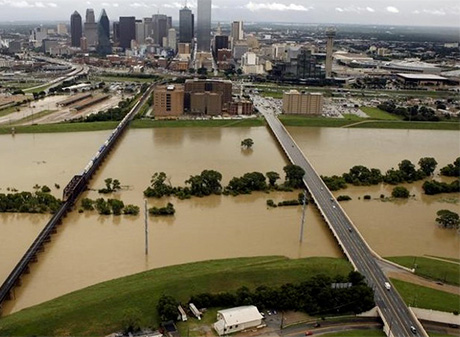The Trinity Regional Flood Planning Group (Trinity RFPG), aka Region 3, is responsible for developing and updating the regional flood plan for the Trinity River Basin – a region that spans from Cooke County in the north to Chambers County on the Gulf Coast. The Trinity RFPG is among 15 regional flood planning groups statewide designated in 2020 by the Texas Water Development Board (TWDB).
Each regional flood planning group must maintain at least one voting member from each of the following interest categories: the public, counties, municipalities, industry, agriculture, environment, small business, electric-generating utilities, river authorities, water districts, water utilities, and flood districts. Each regional flood planning group, at its discretion, may add additional voting or non-voting members for any additional interest category needed to represent the region or add additional members to the required interest categories.
 What We Do
What We Do
The Trinity RFPG submitted its first regional flood plan in 2023, which became part of the 2024 State Flood Plan. During the second planning cycle, the group will submit amendments to the existing regional and statewide plans, while also soliciting new public input and working on a updated regional flood plan, which will be submitted to the TWDB in January 2028. Ultimately, this planning effort is important and relevant to stakeholders region-wide because projects included in the regional flood plan will be better able to access future state funding.
Based on TWDB-provided grant funds, the Trinity RFPG has engaged technical consultants to perform much of the work necessary to develop the regional flood plan. Regional flood plans are required to be based on the best available science, data, models, and flood risk mapping. Each self-governed regional flood planning group is responsible for the following:
- holding regular public meetings and adding additional voting or non-voting members if they are considered necessary;
- choosing a planning group sponsor as its administrative agent;
- selecting and directing the work of its technical consultant (to be procured by the planning group sponsor);
- soliciting and considering public input and making all necessary decisions to develop and adopt its regional flood plan;
- identifying specific flood risks and the need for assessing those risks as well as setting flood risk reduction goals. The three-step flood risk analysis comprises:
- flood hazard analyses that determine location, magnitude, and frequency of flooding;
- flood exposure analyses to identify who and what might be harmed within the region; and
- vulnerability analyses to identify vulnerabilities of communities and critical facilities;
- identifying and recommending flood management evaluations and strategies and flood mitigation projects to reduce flood risk in their regions; and
- focusing both on reducing existing flood risks to life and property and on floodplain management in general to avoid increasing flood risk in the future by keeping future populations out of the way of flood flows.
